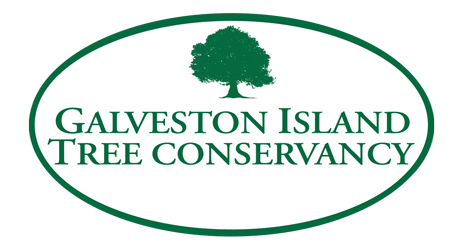Brown is the New Green
Tree Stories: Brown is the New Green by Margaret Canavan. Published February 13, 2018 Galveston County Daily News.
Galveston’s recent freeze was not actually all that cold as freezes go. Plants that survived 25 degrees in 2011 could not handle the same low in January. Why the difference? The 21.5-hour duration of the freeze compounded the stress already placed on vegetation by the low temperature.
What we have now is a landscape that looks very brown.
There is an upside to this: we can really see our trees. Once we move past the grief at losing tender plants, we have the opportunity to clearly observe the trees in home and public landscapes.
Some of our trees are deciduous, and drop their leaves for winter even in warm years. The pecan is an example of that, beautiful but cautious and seemingly the slowest to leaf out in spring, and among the first to let go in fall. In their leafless condition we can observe their graceful shape and look for damaged limbs or those that need pruning.
We might consider adding to the landscape a deciduous tree that will provide winter interest. The bare structure of the small crepe myrtle can be particularly lovely if not deformed by “crepe murder” pruning. Sycamore and lacebark elm are both large fast growers and have beautiful bark which draw our attention with color and artful designs. Cottonwood’s unusual ropy bark stands out when leaves are absent.
Some deciduous trees we are better off without, especially Chinese tallow and Arizona ash. The former are best removed due to their invasive nature, and the latter should be enjoyed during their limited life span due to their tendency toward disease and breakage.
Some semi-evergreens are showing what “semi” means: brown leaves. My beautiful wild olive usually stays green year-round, but now is as brown as can be.
Evergreens are definitely winter showoffs. Norfolk pines tower over many home landscapes and are ridiculously easy to grow. Yaupons sport leaves as well as red berries beloved by birds. Palms are generally thriving, although we have lost many due to disease and some are odd-looking due to the discouraged “pencil-topping” style of pruning. Oleanders have generally fared well although there are a number around town that have browned, likely variants that lack the toughness of their still-green cousins. The majestic oaks’ green canopies will soon be displaced by new leaves, providing us with raking duties. Many citrus trees have suffered, but some (especially kumquats), are quite cold-hardy and still display glossy leaves and orange fruit. Magnolias, pines, Japanese yews, cherry laurels, and camphors appear unfazed by the weather and are attractive year-round.
This is a perfect time to observe and identify trees to consider for your home landscape. Local nurseries and the master gardeners are preparing to provide some excellent choices. The Texas tree selector (http://texastreeplanting.tamu.edu/) is rich with information, and previous Tree Stories are accessible at galvnews.com.
So, now is the time to plan. Just don’t get in a rush to remove brown plants that might show signs of life soon. Remember that green is just around the corner.
———
“Tree Stories” is an ongoing series of articles about island trees, tree care and tree issues. If you have or know of a special tree on Galveston Island that should be highlighted, email treesforgalveston@gmail.com. Margaret Canavan is a Galveston resident, a Galveston County Master Gardener, and a member of the Galveston Island Tree Conservancy Board.


